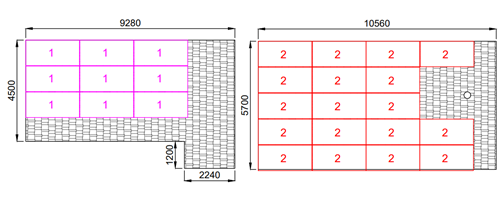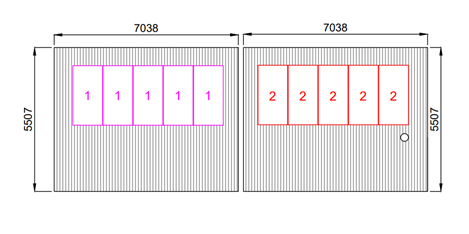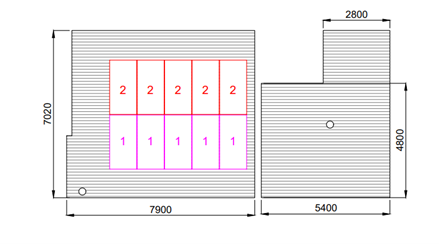Photovoltaic (PV) is the phenomenon of light conversion into electricity. In recent years, solar photovoltaic (PV) systems have emerged as a popular choice among homeowners aiming to reduce their high energy bills with innovative, eco-friendly, and highly energy-efficient solutions. However, designing a solar PV system for client’s home requires careful planning to ensure optimal solar PV performance and energy efficiency. Before installing a residential solar PV system, it’s essential to conduct a thorough analysis of the client’s home’s average monthly electricity usage. Any planned changes in household activities, such as the addition of a high-electricity-consuming home appliance, should also be taken into account accordingly.
Thanks to our Malaysia Government, the NEM 3.0 policy has extended to YR 2024. With it, for sure more houseowners are more willing to invest for their 1st ever solar pv system at home. With NEM 3,0, during design stage, the 1st thing we need to consider is the TNB bills from our house owners. For instances, if the TNB bills is around RM 500, our solar consultant will recommend to install 15 units of 610W solar panels, which is 9.15kWp, to save around RM 460 bills per month. Meanwhile, if your TNB bills is around and more than RM 950, we will recommend to install 27 units OF 610W solar panels, which is 16.47kWp, to save around RM 880 per month.
After knowing how many panels needed, the 2nd step involves determining the types of roof from the client’s home. Generally, there are 5 main types of roofs, which are tile roof, klip lock, metal deck, concrete slab and shingle roof. Tile roof always comes in various dimensions depending on the shape and pattern of the tiles. These dimensions are critical in creating site-visit form for developing most appropriate layout drawings to meet client’s needs.

Figure 1: Tile roof pattern
 Figure 2: Klip-lock roof pattern
Figure 2: Klip-lock roof pattern

Figure 3: Metal deck roof pattern

Figure 4: Tile roof with dimension 0.3*0.3

Figure 5: Tile roof with dimension 0.33*0.22

Figure 6: Solar panels are installed on portrait on top of tile roofs

Figure 7: Solar panels are installed on landscape orientation based on the direction of klip locks
Thirdly, we should consider whether the client’s home requires a single-phase or three-phase inverter as there are some limitation set by the authority and the minimum number of solar panels per string needed will be affected. The inverter is a critical component of a solar PV system responsible for converting the DC electricity generated by the solar panels into usable AC electricity for home. For example, a single-phase inverter requires a minimum of 4 solar panels per string, whereas a three-phase inverter requires a minimum of 5 solar panels per string. This ultimately affects the layout and design of the solar PV system in the drawings. Additionally, a single-phase inverter typically utilizes 2 poles AC MCB, while a three-phase inverter requires 4 poles AC MCB, which must be specified accurately in the Single Line diagram (SLD). For residential solar PV system, string inverter in series arrangement is preferred as it is more cost-effective and easier to operate comparing to the microinverter that operates in a parallel arrangement.
Next, it is important to consider the actual orientation of the roof relative to the sun in order to determine how to combine the solar panels from different orientation into 1 string. The orientation of the sun assessed through the compass and the direction of the gate in site-visit form. We can also observe that during morning period, the west areas in the site visit pictures consistently appear to be darker in comparison to the east areas. Only panels facing the same direction can be combined into the same string within the solar PV system, especially when the roof consists of 3 to 4 directions.

Figure 8: The layout drawing with panels in string 1 face to east, while panels in string 2 face to west

Figure 9: The layout drawing with panels in string 1 face to South-West, while panels in string 2 face to North-East
Lastly, the special precautions, such as the location of antenna, vent pipe, and solar water heater should be highlighted in the layout drawings. These factors can lead to shadows, potential shading effect, and the risk of water leakage, which could hinder the installation of solar panels and reduce the efficiency of the solar PV system. If necessary, we may advise the client to either remove or relocate the antenna to optimize the sunlight capture. Pre-installation steps may also be required in such cases.

Figure 10: One of the layout drawings taking into consideration the impact of shadows, the position of the water heater, and the vent.
In conclusion, designing a solar PV system for home requires careful consideration of various factors, including the roof types and corresponding dimensions, inverter types, roof orientation, PV system model, and special precautions like antenna location and shading effects. With these, a solar PV system that meets the client’s energy requirements can be developed to reduce their carbon footprint and potentially increase their energy revenue.
P/S: Solana Tec Sdn Bhd is currently providing solar PV for residential clients in the following areas:
Kuala Lumpur, Petaling Jaya, Damansara, Kelana Jaya, Sungai Buloh, Shah Alam, Subang, Kota Kemuning, Setia Alam, Alam Impian, Subang Jaya, Puchong, Putra Heights, Seri Kembangan, Klang, Port Klang, Kapar, Kajang, Bandar Baru Bangi, Semenyih, Cheras, Batu 14 Hulu Langat, Ampang Jaya, Pandan, Hulu Klang, Selayang, Rawang, Batu Caves, Gombak, Batu Arang, Kundang, Kuang, Kepong, Sepang, Sungai Pelek, Dengkil, Cyberjaya, Salak Tinggi, Kuala Langat, Teluk Panglima Garang, Jenjarom, Banting, Jugra, Morib, Kuala Selangor and etc.
.




If my house facing south direction, is it suitable to install this solar panel system?
Do you provide solar pv system in Selangor area? How much for 10kWp system?
Is solar string inverter better than microinverter ?
How long is the warranty of the solar panel? What is the lifespan?
I just done my installation, Thanks for your service help us save money alot !!
If solar panel kenal lightning got warranty?
Can do a site visit at my house located in Johor bahru?